Orderlion offers customers an e-commerce operating system for food supply chain
Please introduce yourself and your startup Orderlion to our readers!
My name is Stefan Strohmer, I am Co-Founder & CEO of Orderlion. My co-founder Patrick Schubert (CTO) and I started our company in Vienna, Austria in 2018. We offer our customers an e-commerce operating system (e-commerce OS) that we developed specifically for companies working within the food supply chain.
With our SaaS solution, we help food suppliers and wholesalers digitize their key business processes, enabling them to connect more efficiently with different participants along the supply chain and optimize their operations. For food suppliers and wholesalers, the first step in their digital transformation is usually to digitize their ordering processes as 95% of all orders are still done via phone calls, voice messages on answering machines, and even fax machines.
Orderlion enables every supplier and wholesaler in the food industry to build their own webshop and ordering app so that their customers (e.g. restaurants, hotels, and supermarkets) can work with them more easily. In that respect, we also like to call ourselves the “Shopify of the food supply chain”.
We are now active in 4 European countries, and our customers process over 60 million euros of order volume per year through their online portals provided by Orderlion, with a strong upward trend. Our customers and distribution partners include fruit and vegetable wholesalers, beverage suppliers, breweries and numerous national business associations (e.g. Deutscher Fruchthandelsverband e.V.).
How did you get the idea of Orderlion?
My co-founder Patrick and I had founded businesses together before. One of them was an IT consulting firm with a focus on optimizing the supply chain processes of companies. We had identified a recurring pattern among our former clients in the food industry: Time and again, we were tasked with optimizing the inefficient collaboration with their suppliers on one side and their customers on the other. They wanted to bring their outdated processes into the digital age – we identified this recurring pain point as a valid reason to develop a B2B SaaS solution specifically tailored to the food supply chain.
Why did you decide to start with Orderlion?
After Patrick and I lived and worked in Silicon Valley for a while a few years ago, it was obvious to both of us that we wanted to build a startup with a global focus and impact. With this shared goal in mind, we decided to develop a software platform that should incorporate our previous experiences as founders. Accordingly, we started working on Orderlion in 2018.
What is the vision behind Orderlion?
Our vision is to make the global food supply chain more sustainable through digitalization. We have two goals: 1) to reduce food loss caused through inefficient planning and collaboration along the supply chain and 2) to enable thousands of food suppliers and wholesalers to grow in the long term, and thereby empower regional businesses through the creation and preservation of jobs.
We are convinced that we can only realize a more sustainable global food supply chain if all players involved work with state-of-the-art technologies to unleash their full potential. This means in particular to develop digital solutions tailored to the specific needs of small and medium-sized enterprises (SMEs), as these companies make up 99% of the businesses along the supply chain. We want to be the #1 digitalization partner for them.
How difficult was the start and which challenges you had to overcome?
The food market is an absolutely fascinating industry. With billions of euros worth of goods moving across the globe every year, there are a lot of really big problems that need to be solved, offering plenty of business potential. It requires a lot of discipline to limit oneself to just one topic within this large market and focus 100% on it. Since digitizing the food supply chain can be accomplished in a number of ways, we wanted to take the time necessary to develop the right strategy and product that would satisfy our clients when we founded Orderlion.
After raising an initial pre-seed financing round from business angels, we first tested and iterated different MVPs for almost a year and a half to understand the industry and the processes that needed to be optimized in all possible details. At the beginning of 2020, we eventually had identified a scalable approach for solving the most important pain points that no one had tried before and clearly worked out our business model – this is how today’s Orderlion was born. Based on that, we closed a seed investment of one million euros with Austrian VC fund tecnet equity which specializes in B2B startups to kickstart our growth.
Who is your target audience?
Our target group are basically all suppliers and wholesalers who are part of the global food supply chain. The world of food and beverages is big, all kinds of goods have to get from A to B at any time of the day. Accordingly, our customers range from national beverage suppliers and international breweries to regional meat, fruit and vegetable wholesalers who deliver fresh products to their customers. On the ordering side, there are a large number of businesses that regularly have to order new goods and produce from their suppliers via Orderlion’s e-commerce OS. This includes restaurants, hotels, care businesses, supermarkets or international fast food chains.
What is the USP of your startup?
Orderlion is like Shopify in terms of its fundamental idea, but with the difference that it is tailored specifically to food suppliers and wholesalers. A supplier or wholesaler can link its existing inventory management system with Orderlion and then let its customers place orders via its own online store and mobile app which get provided through our platform. It basically works as if we as end consumers order something online from the comfort of our homes, only with much higher volumes.
In addition, suppliers and wholesalers can use Orderlion for optimizing their sales. With our platform, they can set up target group-specific offers and promotions to their existing customers. Our clients can also use Orderlion to make their customer support more efficient. Through a built-in chat function, every customer has the possibility to get in touch with a supplier immediately.
Can you describe your typical workday?
It depends a lot on the specific role of a founder what a typical workday looks like. In the case of our CTO, the ongoing coordination with our product development and developers as well as testing new technologies for future projects are the main areas of responsibility.
In my role as CEO, most tasks revolve around the growth of our company. Whether it is through conversations with investors, business partners, or our operational teams, my job is to make sure that everyone else can do their job as well as possible and that there are no obstacles in anyone’s way.
Where do you see yourself and your startup Orderlion in five years?
At the moment, everything at our company is geared towards international growth. After our start in Germany and Austria, we expanded into Switzerland and the UK a few months ago. These markets are developing extremely well for us. We are already evaluating which countries we will launch in next. Overall, we aim for Orderlion to become the most comprehensive online platform to strengthen the relationship between food suppliers and wholesalers and their customers and to make their collaboration more sustainable.
We aim to become the digital standard for the food supply chain so that the entire industry can work together in a data-driven and more efficient way. In the future, we want to be in a spot where we massively help reduce food loss along the supply chain as well as support regional businesses in building economic resilience and thus maintaining their independence.
What 3 tips would you give to founders?
Use the first 15 minutes of each morning to write a daily to-do list. Order and prioritize your tasks by “business impact” and focus only on those throughout the day. Without compromise.
Work out your “core business” as early as possible. You can’t have too many different goals going on at the same time or you’ll have chaos in the company. As a team, with a clear main process and focus throughout the whole company, you create a higher output and better outcomes with less resources. For example, it is better to start with a very narrow customer target group instead of all of the ones that could theoretically be approached.
Hire experts who are much better in their fields than you are. This way you can focus 100% on your tasks and your areas of responsibility. If you don’t delegate enough, it will bring a company to a halt. A team made up of strong generalists and subject matter experts will accomplish much more together than you ever could on your own. Once you find the right setup, you can watch with joy how your initial idea grows over time into something that is much greater than the sum of its parts.
Thank you Stefan Strohmer for the Interview
Statements of the author and the interviewee do not necessarily represent the editors and the publisher opinion again.










